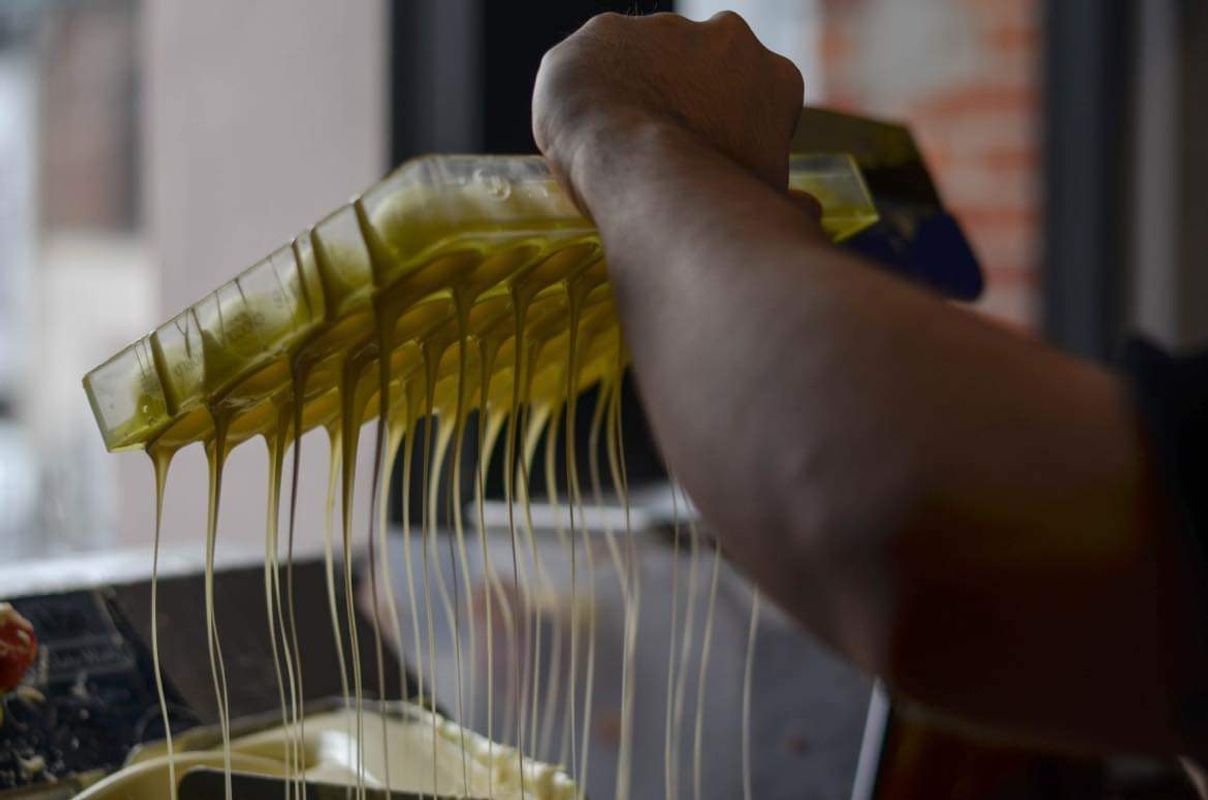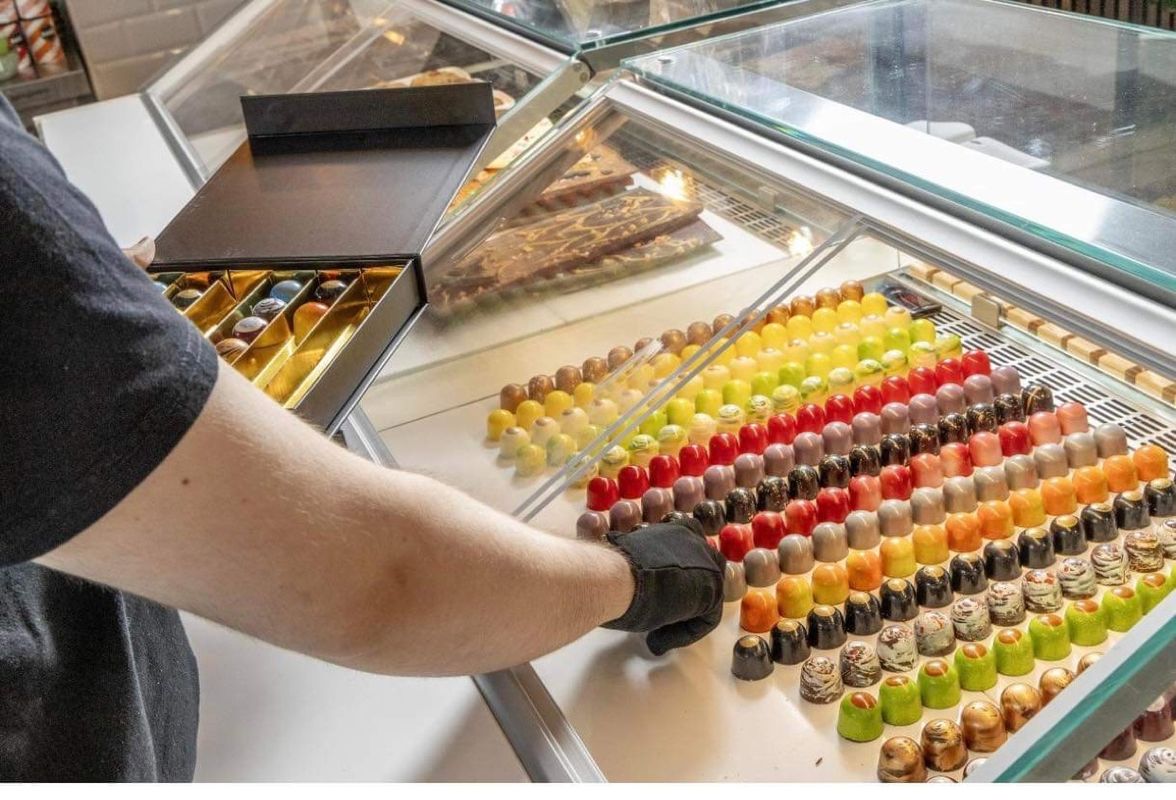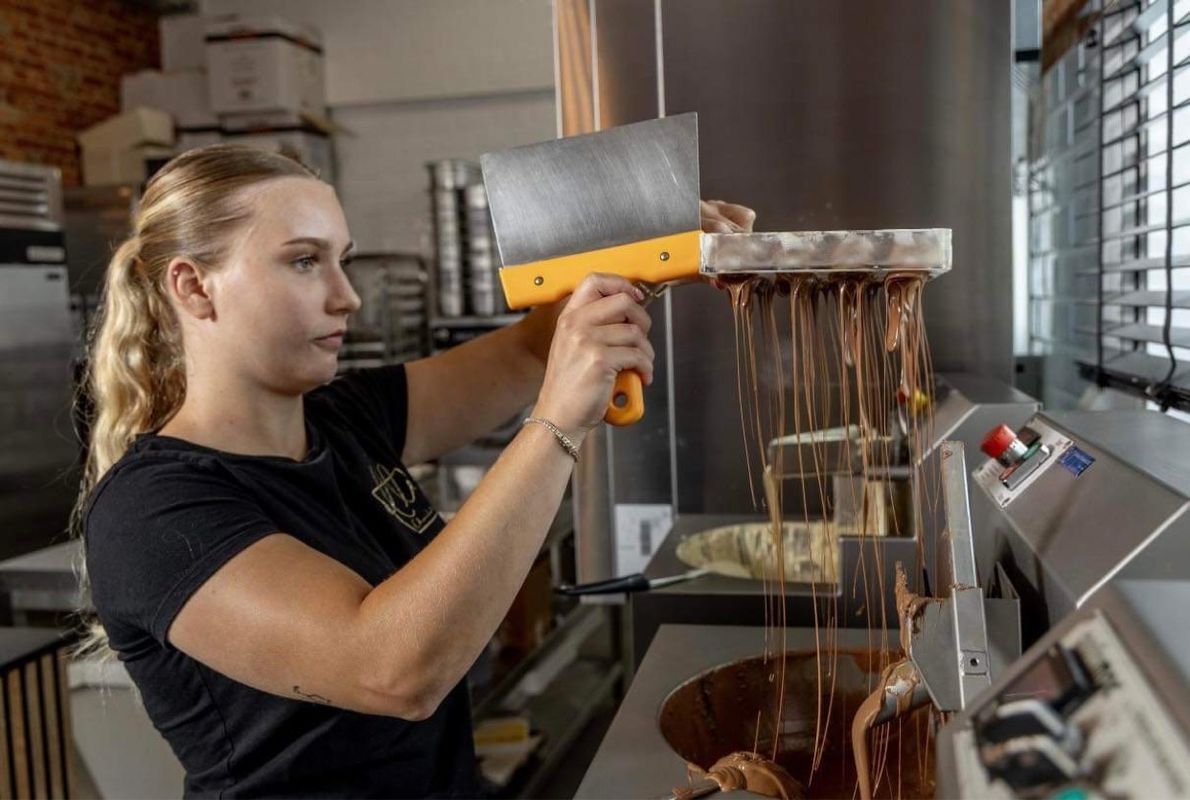Botanic garden chocolates
Taste our passion for plants and research in 4 unique chocolates
We are delighted that you bought our Botanic Garden chocolates. Did you know that with every box of chocolates you buy, you contribute directly to our operation? The different flavours Musa, Coffea, Citrus and Rosa have been carefully chosen because of their connection to our research or important conservation collections.
Musa: banana in a caramel jacket, with a hint of cinnamon
Banana is one of the most widely eaten fruits in the world. Researchers try to further improve existing species, but traits are also lost as plants continue to be bred. Wild species still have these.
Wild bananas still form seeds, so we can easily keep them in our seed bank, securing genetic diversity for the future. Since 2016, Meise Botanic Garden has managed a collection of seeds of wild bananas. Our researchers also continue to search for wild species of bananas that have not yet been scientifically described. At the Green Ark, banana plants are grown from the collected seeds, for research and for harvesting the seeds.
The Botanical Garden's collection forms the basis for further research into applications in cultivation by our international partners.

Coffea : coffee and speculoos, a typically Belgian combination
Climate change also affects coffee growing. Arabica coffee is particularly affected, as it grows in mountain areas where the impact of climate change is greater than in the lowlands. The more heat- and disease-resistant robusta coffee grows naturally in the warm and humid lowland rainforest in Africa, giving it an advantage.
However, disease pressure is increasing everywhere. Therefore, cultivated coffee varieties need to become more climate resilient and disease resistant.
It is important to map and preserve the wild varieties of our coffee plant as much as possible. After all, forest exploitation, agriculture and climate change threaten the forests where wild coffee naturally occurs. We always do this research in collaboration with partners in the countries of origin.

Citrus: feast for your taste buds with an explosion of mandarin, kalamansi and lime
Meise Botanic Garden has a long tradition of growing orangery plants. More than 150 of these plants that are indoors in winter and outdoors in summer have been in our care for decades. In the 19th century, special buildings were erected for overwintering these plants. They were called ‘orangeries’, after the orange tree or orange.
The Botanic Garden has an extensive collection of citrus plants. Some, like the bitter orange, are more than 100 years old.
Our gardeners care for and move these beauties with great patience and skill. Everything goes outside in mid-May, and back inside in mid-October.

Rosa: rose marshmallow on a crispy base containing rose hips
Over the last few decades, Meise Botanic Garden has built up an extensive collection of wild roses, comprising 125 of the estimated 200 known varieties. In spring, the flowers steal the show. From late summer until deep into winter, it's down to the rose hips.
The Rose Garden is inspired by a budding rose. The labyrinth in the centre, formed by two spirals, tells the story of the origin and evolution of wild roses and shows how they are related. In the flowerbeds around it, you will find out how garden roses were selected and developed from wild roses.
The herbarium collections of the Botanic Garden are an important reference for rose specialists from all over the world. In particular, Crépin's 19th century rose herbarium, a collection of dried roses, is of great value. In turn, the library holds an exceptional collection of books and historical illustrations on roses.

About our supplier:
Elle Chocolates is a young company with a passion for taste and quality. Already the first year of their existence, they were rewarded with a mention in the Gault Millau list of chocolatiers. They work with sustainable Belgian chocolate. www.ellechocolates.be







